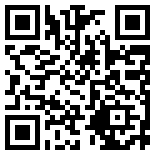如何用Opencv实现静态手势识别玩石头剪刀布?
扫描二维码
随时随地手机看文章

要想运行该代码,请确保安装了:python 2.7,opencv 2.4.9
效果如下:
算法如下:
把图片先进行处理,处理过程:
1.用膨胀图像与腐蚀图像相减的方法获得轮廓。
2.用二值化获得图像
3. 反色
经过如上的处理之后,图片为:
这之后就简单了,设计一个办法把三种图像区分开来即可。
代码如下:
# -*- coding: cp936 -*- import cv2 import numpy import TIme import random import os def judge( ): #构造一个3&TImes;3的结构元素 # return 0 stone ,1 jiandao, 2 bu img = cv2.imread("wif.jpg",0) element = cv2.getStructuringElement(cv2.MORPH_RECT,(11,11)) dilate = cv2.dilate(img, element) erode = cv2.erode(img, element) #将两幅图像相减获得边,第一个参数是膨胀后的图像,第二个参数是腐蚀后的图像 result = cv2.absdiff(dilate,erode); #上面得到的结果是灰度图,将其二值化以便更清楚的观察结果 retval, result = cv2.threshold(result, 40, 255, cv2.THRESH_BINARY); #反色,即对二值图每个像素取反 result = cv2.bitwise_not(result); result =cv2.medianBlur(result,23) a=[] posi =[] width =[] count = 0 area = 0 for i in range(result.shape[1]): for j in range(result.shape[0]): if(result[j][i]==0): area+=1 for i in range(result.shape[1]): if(result[5*result.shape[0]/16][i]==0 and result[5*result.shape[0]/16][i-1]!=0 ): count+=1 width.append(0) posi.append(i) if(result[5*result.shape[0]/16][i]==0): width[count-1]+=1 """ print 'the pic width is ',result.shape[1],' ' for i in range(count): print 'the ',i,'th',' ','is'; print 'width ',width[i] print 'posi ',posi[i],' ' print count,' ' print 'area is ',area,' ' cv2.line(result,(0,5*result.shape[0]/16),(214,5*result.shape[0]/16),(0,0,0)) cv2.namedWindow("fcuk") cv2.imshow("fcuk",result) cv2.waitKey(0) """ #判定时间 width_length=0 width_jiandao = True for i in range(count): if width[i]>45: #print 'bu1'; return 2; if width[i]<=20 or width[i]>=40: width_jiandao= False width_length += width[i] if width_jiandao==True and count==2: return 1; if(area <8500): #print 'shi tou'; return 0; print "width_leng",width_length if(width_length<35): #这个时候说明照片是偏下的,所以需要重新测定。 a=[] posi =[] width =[] count = 0 for i in range(result.shape[1]): if(result[11*result.shape[0]/16][i]==0 and result[11*result.shape[0]/16][i-1]!=0 ): count+=1 width.append(0) posi.append(i) if(result[11*result.shape[0]/16][i]==0): width[count-1]+=1 """ print 'the pic width is ',result.shape[1],' ' for i in range(count): print 'the ',i,'th',' ','is'; print 'width ',width[i] print 'posi ',posi[i],' ' print count,' ' print 'area is ',area,' ' """ width_length=0 width_jiandao = True for i in range(count): if width[i]>45: #print 'bu1'; return 2; if width[i]<=20 or width[i]>=40: width_jiandao= False width_length += width[i] if width_jiandao==True and count==2: return 1; if(area>14000 or count>=3): #print 'bu2'; return 2; if(width_length<110): #print 'jian dao'; return 1; else: #print 'bu3'; return 2; """ print("这是通过摄像头来玩的剪刀石头布的游戏,输入y开始 ") s = raw_input() capture = cv2.VideoCapture(0) cv2.namedWindow("camera",1) start_TIme = TIme.time() print("给你5秒的时间把手放到方框的位置 ") while(s=='y' or s=='Y'): ha,img =capture.read() end_time = time.time() cv2.rectangle(img,(426,0),(640,250),(170,170,0)) cv2.putText(img,str(int((5-(end_time- start_time)))), (100,100), cv2.FONT_HERSHEY_SIMPLEX, 2, 255) cv2.imshow("camera",img) if(end_time-start_time>5): break if(cv2.waitKey(30)>=0): break ha,img = capture.read() capture.release() cv2.imshow("camera",img) img = img[0:210,426:640] cv2.imwrite("wif.jpg",img) judge() cv2.waitKey(0) print "fuck" """ def game(): fuck =[] fuck.append("石头") fuck.append("剪刀") fuck.append("布") capture = cv2.VideoCapture(0) cv2.namedWindow("camera",1) start_time = time.time() print("给你5秒的时间把手放到方框的位置 ") while(1): ha,img =capture.read() end_time = time.time() cv2.rectangle(img,(426,0),(640,250),(170,170,0)) cv2.putText(img,str(int((5-(end_time- start_time)))), (100,100), cv2.FONT_HERSHEY_SIMPLEX, 2, 255) cv2.imshow("camera",img) if(end_time-start_time>5): break if(cv2.waitKey(30)>=0): break ha,img = capture.read() capture.release() cv2.imshow("camera",img) img = img[0:210,426:640] cv2.imwrite("wif.jpg",img) p1 = judge() pc = random.randint(0,2) #print p1,' ',pc,' ' print "你出的是",fuck[p1]," 电脑出的是",fuck[pc]," " cv2.destroyAllWindows() if(p1==pc): print "平局 " return 0 if((p1==0 and pc ==1)or(p1==1 and pc ==2)or(p1==2 and pc ==0)): print '你赢了 ' return 1 else: print '你输了 ' return -1 def main(): you_win=0 pc_win=0 print("这是通过摄像头来玩的剪刀石头布的游戏,请输入回车开始游戏 ") s = raw_input() while(1): print "比分(玩家:电脑) ",you_win,":",pc_win,' ' s = raw_input() os.system('cls') ans =game() if(ans == 1): you_win+=1 elif(ans == -1): pc_win+=1 print "为了减少误判,请尽可能将手占据尽可能大的框框" main()






